Original author: Rapolas
Translation: LlamaC
"Recommended message: This article, from the metaphorical perspective of the chain city, demonstrates the future potential of the Gravity chain to be launched by Galxe, and analyzes the concept and existing problems of the rise of "chain abstraction." Galxe has a unique position in the ecosystem, distributing resources by gathering upstream and downstream, and its growth trajectory shows obvious convergence with the initial Cex. However, in the future competition between parallel EVM chains and non-EVM parallel chains, where will Gravity lead users to, inevitably arouses curiosity and continuous scrutiny! Will you copy this assignment?"
Text?
How much chain abstraction do we really need?
There is an overinvestment in encrypted infrastructure. The long feedback cycle of infrastructure allows the lack of product-market fit (PMF) to be concealed for a long time in this field, much longer than consumer encrypted applications.
The lack of establishment of infrastructure at the protocol level has led to venture capital capturing excess value in numerous infrastructure and middleware projects. Layer 1 (L1) has created huge value by utilizing an infinite total addressable market (TAM). Then, infrastructure projects hope to approach the valuation of L1 as much as possible because they have their own network consensus, block production, etc.
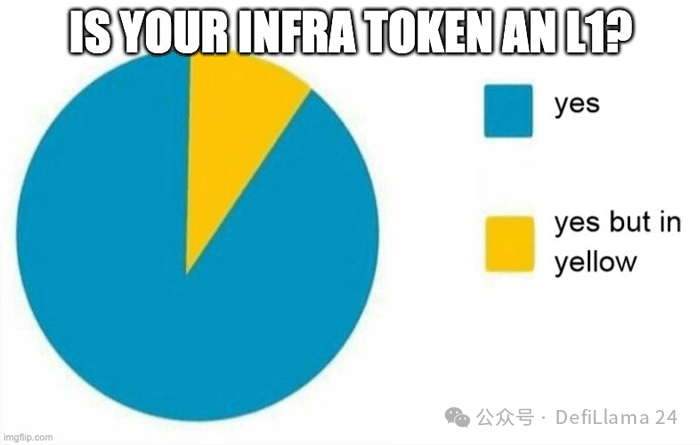
This is also one of the reasons why the field of encrypted infrastructure is so full of memetic culture. Everyone knows the effective strategy and the results you will get if you follow this strategy:
- Claim that you are expanding the blockchain;
- Raise too much funds from venture capital;
- Announce "partnerships" with other infrastructure projects before your chain goes online;
- Release a testnet (which may crash), and then publicize some crazy metrics;
- Launch tokens within a market value range of 10 billion to 100 billion USD.
The rise of chain abstraction
Recently, we have observed that some people are trying to further blur step 1. They no longer claim to expand the blockchain, but turn to chain abstraction. This sounds like the ultimate Holy Grail of infrastructure, the cherry on top, the end of the game.
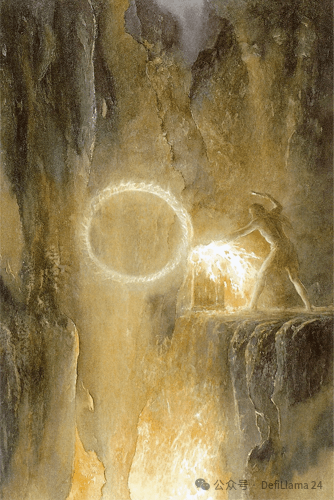
Every infrastructure founder has a natural desire to build a chain. Some dare not admit it.
The problem is: if there are no users, who are we providing abstraction for? Chain abstraction is a solution to the problem of chain fragmentation caused by the ruthless investment of venture capital, and without products, chain abstraction is not a real solution to the real problem. It does not even bring significant changes and solutions to new problems for consumers like Ford or iPhone did (both of which were qualitative leaps in consumer experience compared to before).
Considering that each infrastructure project is created in response to the previous solution:
- L1 cannot scale, so we created Rollup;
- Rollup fragmented liquidity, so we built cross-chain bridges;
- There are too many cross-chain bridges, so we aggregated them;
- There are too many aggregators, so we built Intent;
- Intent is difficult to explain, so we built an intent interpretation layer;
- … Do you think it will stop here?
User experience and the challenge of chain abstraction
Chain abstraction may bring about some kind of centralization trade-off, as the decentralization level of the stack can only be as thin as its weakest link. Abstraction needs to coordinate around state proofs, solver execution, block confirmation, and cross-chain transaction guarantees, so consensus must be reached on this. There is always another chain abstraction solution with a faster/cheaper/more innovative buzzword in the capital market, better than the current solution. Founders and venture capital will set new rules for the game, but the gameplay and their rewards have always been the same in order to win the same rewards.
Building infrastructure is often a response to poor user experience, as high costs and slow settlements are part of the user experience problem. But when adoption fails to meet expectations, poor encrypted user experience becomes an easy excuse to shirk responsibility. Criticizing user experience requires almost no effort, so everyone is doing it. Whenever the encrypted cycle turns indifferent, people blame it on poor products, forgetting that these products were initially so exciting that they brought us to the peak of the market.
In the past, we discussed encrypted super applications, which started from products rather than infrastructure. Whether it's Uniswap, Metamask, Magic Eden, StepN, Blur/Blast, dYdX, or Hypeliquid, it is obvious that the concept of web3 is being disrupted. Everyone is not collaborating on a composable stack, but building their own technology stack according to their own incentives. That's okay.
But it also means that chains will be abstracted by those who do not call themselves chain abstraction; instead, it will be the people who have built the most popular applications in encryption.
The most popular application in the field, Galxe
Galxe (formerly known as Project Galaxy) is the most widely used web3 application, far ahead. Its network traffic exceeds that of Uniswap, Opensea, or Etherscan. Over 20 million unique addresses interact with Galxe. Over 1 million unique visitors use the Galxe website every day.

Before you consider this attraction as a robot airdrop feast, consider that most on-chain use cases are dominated by robots. Most token transactions are completed by robots. Encrypted games are also played by robots, as they are still primarily driven by financial incentives. NFT market making is also done by robots. AI agents (smarter robots) are starting to participate in on-chain economy. Even our social finance darling heavily relies on robots, making social finance less social. Encryption is about incentives and resource coordination, and so far, robots have proven to be excellent target users for harvesting on-chain incentives. In the future, DAO and UBI agents are closer than we imagined.
But whether users are robots is not important (it is worth noting that Galxe's 1 million daily active users are actual website visitors, not robots); what matters is the amount of economic activity and the value that protocols or applications may capture.
Galxe found its entry point in airdrop distribution. But since then, it has come a long way by building an identity layer including Galxe Passport (identity) and Galxe Score (reputation).
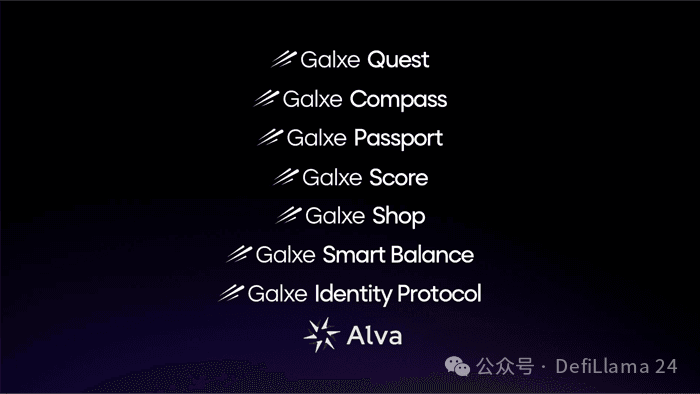
The most successful companies are those that create new bundles or unbundle everyone. Galxe has aggregated the project supply side, aiming to build communities and distribute their tokens, and the demand side is users looking for opportunities to earn tokens. What used to be the core business of centralized exchanges, enabling projects to build communities before the token generation event (TGE), has now become a larger market.
We have seen countless early attempts to build platforms for identity or data monetization, but they always failed because they did not start from products that people wanted to use (most users don't care who owns their data). Galxe has built a unique use case and provided strong enough financial incentives for people to reveal their identities. Such data will become valuable in ways we have not foreseen, especially if policymakers sincerely try to make encrypted currency consumerized.
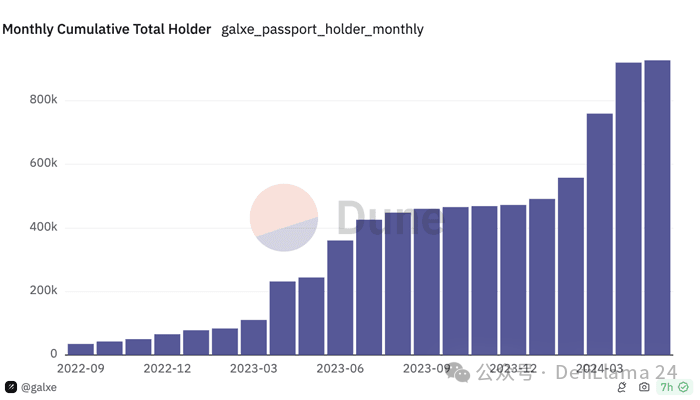 Almost 1 million people have created Galxe Passports with their real-life identities.
Almost 1 million people have created Galxe Passports with their real-life identities.
Aggregating users not only allows for the construction of a valuable identity layer, but also enables the construction of consumer-type products that would not succeed as standalone ideas. This includes the Galxe mobile app, fund transfers and consumption, AI-assisted trading products, research centers, and more. Galxe has become the first stop for many new users in the encrypted field.
The question now is: How many valuable products can Galxe build so that these users never have to leave its ecosystem?
Galxe spans across 34 different chains. This may be more than any cross-chain bridge or centralized exchange can integrate. Through Galxe's smart balance feature, users can deposit funds into a single treasury and use the balance to pay transaction fees on multiple chains through Galxe smart contracts, without the need for bridging. Soon, smart balances will be upgraded to smart savings, allowing users to earn returns on deposited assets.
Many people are unaware that while others look elsewhere, Galxe has been abstracting chains and accounts. With the recent announcement of the launch of Galxe's Gravity chain, it will become the largest blockchain by transaction volume, with a monthly transaction volume of approximately 100 million USD.

Aggregating user identities, their transactions, and controlling block space is the combined strategy for abstracting the chain. For us, it seems that only a few encrypted companies—Galxe, Coinbase, and perhaps TON—have the complete ability to make consumer-friendly chain abstraction a reality. Although they approach it from different angles, the expected result, the combination of blockchain onboarding and identity, seems the same to us.
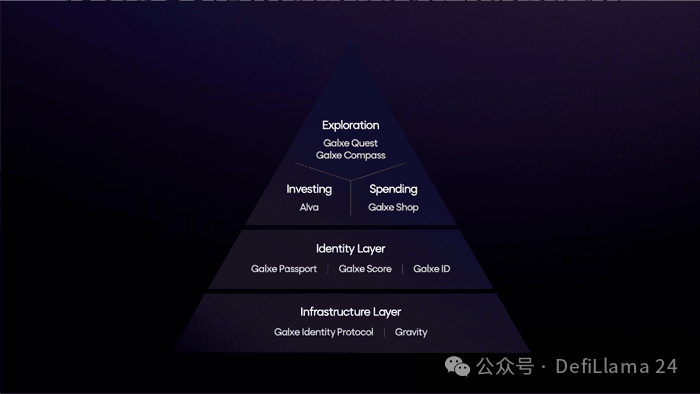 Coinbase's Galxe's ultimate game has been revealed
Coinbase's Galxe's ultimate game has been revealed
We don't know who needs to hear this, but rebranding in encryption is always optimistic. There is no better stock code than $G.
免责声明:本文章仅代表作者个人观点,不代表本平台的立场和观点。本文章仅供信息分享,不构成对任何人的任何投资建议。用户与作者之间的任何争议,与本平台无关。如网页中刊载的文章或图片涉及侵权,请提供相关的权利证明和身份证明发送邮件到support@aicoin.com,本平台相关工作人员将会进行核查。




